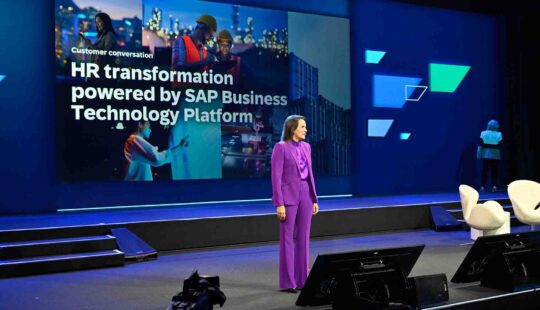Since the pandemic started, the supply of people and the demand for skill sets have become more dynamic than ever – both in the U.S. and worldwide. And this has huge ramifications for HR leaders. For example, when you’re developing a workforce plan, you can’t just assume that there’s going to be a 13% turnover anymore; 13% can become 50% almost overnight, in which case your plan flies out the window.
Going forward, workforce plans must be dynamic and adjustable based on a continuous monitoring of supply and demand. Such flexibility used to be extremely difficult to accommodate – back when the top determinants of supply were worker location and role. Location-bound talent meant that when an employee worked in California, your skills were in California. If you needed specialized IT skills in New York, you had to fly your employee across the country and often they also needed a role change.
But as the pandemic shifted working models to work from home or hybrid models, knowledge workers not only became untethered from the office, but part of a free-range workforce that can work anytime and anywhere. They became location unbound – and prefer it, as evidenced by the large volume of people moving out of the city to the country, to Florida, or even debating a move to the British Isles, anywhere with a good broadband connection.
At the same time, we’re seeing a new trend: unbound workers who are performing multiple – and increasingly diverse – roles as part of their current position. For example, they may work three days a week on one project or in one part of the business, and on the other two days support other initiatives with teams that are across the country or even overseas. These versatile workers are in demand for dynamic teams because their diversity of experience and unique skill sets aren’t necessarily needed in their full-time role, but they are in high demand across the business on an ad-hoc or project basis. This trend could be beneficial to both the organization and employee, as variety can prevent monotony – which hurts the employee experience and leads to attrition – and even increase job satisfaction, engagement, and retention. Mostly this leads to significant increases in productivity and organization agility.
Given these trends, we’re seeing the future of work as a flexible, global, incredibly agile gig economy that encompasses internal and external workers. This means hiring managers don’t always need to create a new position and budget for every skill set they need; rather, the business makes it easy for them to meet their “demand” by finding, accessing, and onboarding the right people – wherever they are – with the right skills to meet their needs. Imagine having a talent management system that can cross-charge the salaries or hourly rates of workers to multiple tasks, departments, and operational units across the globe. People can also sign up for flexible, part-time opportunities, get exposure to new areas of the business, develop new skills, and add value along the way.
There is, of course, a balance to be considered between the permanent and flexible elements of any employee’s position. Too much flexibility and fluidity could diminish job security and expose employees to the negatives of a potential precarious work environment – a healthy balance is therefore vital.
Looking ahead, this kind of role and location flexibility will increasingly become necessary to access the skill sets needed to meet business and sustainable economic growth. Many Organization for Economic Cooperation and Development (OECD) member countries have had insufficient fertility rates for births between 2020 and 2022 to meet the demand for skills in 16- to 20-year-old employees entering the workplace between 2036 and 2040. However, Africa will potentially have enough 20-year-olds to fuel OECD country development and economic growth. Tapping into people with desired skill sets from these areas of the world in an ethical and a sustainable way by not relocating people is the best possible way forward. It preserves and bolsters communities and cultures rather than depriving them of their skill base and human resources.
As discussed in a previous article, flexibility is also important when trying to diversify your workforce by attracting, hiring, and retaining workers of diverse genders, age, and ethnic groups. This is critical today. Surveys conducted during the pandemic, such as the Future Forum Pulse Survey, indicate that Black males, for instance, had a much better employee experience when working remotely because they report experiencing less unconscious bias and a great deal more equality. Forcing these workers to come to an office every day can make them more of a flight risk – and put your employee engagement and access to their valuable skills at risk.
So how can your HR department support this level of flexibility and optimize workforce planning in such an environment?
Start to think of ways to address skills gaps and empower employees to work how and where they want. Enable employees to work in cross-functional teams based on organizational tasks or projects. They can be across hierarchies or lines of business and help to create an agile working environment while fueling skill development. It’s also important to take an employee-centric approach to development and growth by providing access to internal opportunities through fellowships, gigs, temporary assignments, mentor programs, and experiential learning. Employees will have the flexibility to create a work experience that is uniquely their own, but it will also create an adaptable workforce that is future ready.
The future of workforce planning is here – and it’s full of potential for innovations. To learn more, visit www.sap.com/people-analytics.
Tammie Eldridge is part of Solution Marketing at SAP SuccessFactors.



